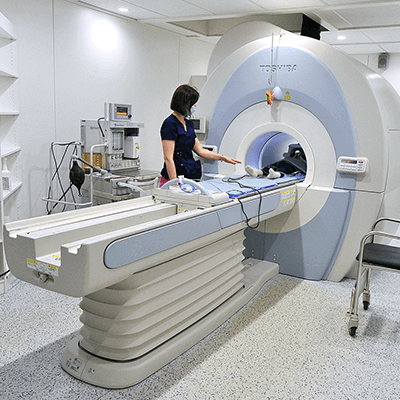Research 101: What is Research? | NFXF (original) (raw)
-
- Fragile X 101
* Fragile X 101
* Prevalence
* Signs and Symptoms
* Genetics and Inheritance
* Testing and Diagnosis - Fragile X Syndrome
* Fragile X Syndrome
* Newly Diagnosed
* Fragile X & Autism - Associated Conditions
* Premutation
* FXPOI
* FXTAS
* New Developments - Xtraordinary Individuals
- 31 Shareable Fragile X Facts
- Fragile X Info SeriesFact sheets by topic
- Fragile X MasterClass™️
- Knowledge CenterFrequently asked questions.
- Fragile X 101
-
- Resources for Families
- FXS Strategies by Topic
* Adulthood
* Autism
* Behavior
* COVID-19
* Daily Living
* Females
* Medications
* Physical & Medical Concerns
* Puberty & Sexuality
* School & Education - FXS Resources by Age
- Premutation Topics
* The Fragile X Premutation
* FXTAS Resources
* FXPOI Resources
* Reproductive Resources - Newly Diagnosed
- ResearchLearn and participate
* Research 101What is research?
* STX209 Reconsent ProjectEnrollment is open
* International Fragile X Premutation Registry — For ParticipantsEnroll now
* Participate in ResearchMyFXResearch Portal
* Original Research Articles
* FORWARD-MARCHDatabase and registry
* Research ResultsNew and archives - Find a Fragile X Clinic
* U.S. Fragile X Syndrome Clinics
* FXTAS-Specific Clinics
* International Clinics & Organizations - Find a Contact Near You
- Knowledge CenterOur Fragile X library
- Webinars & Videos
- Printable Resources
- Treatment Recommendations
-
- Resources for Professionals
- NFXF MasterClass™️ for Professionals
- Research Readiness ProgramResearch facilitation for researchers
- NFXF Data Repository
- International Fragile X Premutation Registry — Research Requests
- FORWARD-MARCHRegistry & Database
- NFXF-Led PFDD Meeting for Fragile X SyndromePatient-focused drug development
- Marketing Your Research Opportunities
- Treatment Recommendations
- Fragile X Clinics
* U.S. FXS Clinics
* FXTAS-Specific Clinics
* International Clinics & Organizations - NFXF RESEARCH AWARDS
* Randi J. Hagerman Summer Scholar Research Awards
* Junior Investigator Awards
Get
Involved-
- Fragile X 101
* Fragile X 101
* Prevalence
* Signs & Symptoms
* Genetics and Inheritance
* Testing and Diagnosis - Fragile X Syndrome
* Fragile X Syndrome
* Fragile X & Autism - Associated Conditions
* Premutation
* FXPOI
* FXTAS
* New Developments - Xtraordinary Individuals
- 31 Shareable Fragile X Facts
- Fragile X Info Series
- FRAGILE X MASTERCLASS
- Knowledge Center
- Fragile X 101
-
- Resources for Families
- FXS Strategies by Topic
* Adulthood
* Autism
* Behavior
* Daily Living
* Females
* Medications
* Physical & Medical Concerns
* Fragile X and Puberty & Sexuality
* School & Education - FXS Resources by Age
- Premutation Topics
* The Fragile X Premutation
* FXTAS Resources
* FXPOI Resources
* Reproductive Resources - Newly Diagnosed
- Research
* Research 101: What is Research?
* STX209 Reconsent Project
* International Fragile X Premutation Registry — For Participants
* Participate in Research
* Original Research Articles
* FORWARD-MARCH
* Research Results Roundup - Find a Clinic Near You
- Find a Contact Near Your
- Knowledge Center
- Webinars & Videos
- Printable Resources
- Treatment Recommendations
-
- Resources for Professionals
- NFXF MasterClass™️ for Professionals
- Research Readiness Program
- NFXF Data Repository
- International Fragile X Premutation Registry — Research Requests
- FORWARD-MARCH Registry & Database
- NFXF-Led Patient-Focused Drug Development Meeting
- Marketing Your Research Opportunities
- Treatment Recommendations
- Find a Clinic Near You
- NFXF Research Awards
* Randi J. Hagerman Summer Scholars
* Junior Investigator Awards
Research 101: What is Research?
Research 101: What is Research?Dany Petraska2023-12-12T21:55:13-05:00
Research 101: What is Research?
What does research mean to the National Fragile X Foundation and what might it mean to you — individuals and families living with Fragile X? We believe research to be multifaceted and quite vague, which is why we’ve broken down the most important aspects relevant to Fragile X syndrome.
RESEARCH 101
The Ultimate Guide for All Families Living with Fragile X
The NFXF has carefully curated the Fragile X-specific information you need to make important decisions for yourself and your family: what protections are in place, what you may be asked to do, what NFXF is doing to make sure your voice is heard during all treatment development, and more!

Learn: Basic and Clinical Research Concepts
Why does research start in a lab?
Research that starts in a basic science lab and is meant to inform and translate to clinical care is called translational research. Fondly coined “bench to bedside,” translational research can serve as a bridge between laboratory models of Fragile X to clinical care.
Why is that important? Studying the molecular components of Fragile X helps us better understand how individuals with Fragile X syndrome experience the world and how we can find effective treatments to improve their quality of life.
What is a knockout mouse?
A knockout mouse is a laboratory mouse that researchers use to alter DNA sequences, “knocking out” an existing gene by using a using a DNA fragment made by a lab.
Why is it important? Knockout mice are important for research because clinicians can study what happens to an organism when a certain gene is turned off or inactivated. This information gives us an idea of what happens when the gene being studied is “knocked out” in humans!
What are human pluripotent stem cells?
Human pluripotent stem cells, or hPSCs, are made from your somatic — skin or blood — cells. hPSCs can be used to create models of Fragile X because they are from an individual with Fragile X. Although a lot of mechanisms on the molecular level and during brain development are similar in mice and humans, there are a lot of differences.
Why are they important? hPSCs are important because using cells from someone with the mutation can create a better model for studying Fragile X-associated disorders. These models can help us better understand diseases, provide better information on drug effectiveness, and allow for a more ethical alternative to cell-regenerative therapy as they aren’t taken from a human embryo.
What are CRISPRs and Cas9?
CRISPRs (clustered regularly interspaced short palindromic repeats) are specialized stretches of DNA. The protein Cas9 (CRISPR-associated protein 9) is an enzyme that acts like a pair of scissors, capable of cutting strands of DNA. For example, in the Fragile X syndrome field we use CRISPR to identify the expanded CGG repeat.
Why are they important? CRISPR are revolutionary in the field of research because it allows researchers to modify DNA sequences and gene function.
What are clinical tools?
Clinical tools include data collection strategies, treatments, technological advancements, and devices that help researchers advance in their field of research.
Why are they important? Clinical tools are important because they are available instruments clinicians may use to help them gather data more accurately and efficiently.
Common examples you may see in clinical research:
Physiology
The scientific study that focuses on the mechanism and functions of living organisms and body parts. Physiology provides necessary information about how our bodies are supposed to function, helping us identify abnormalities and search for effective treatments.
You may receive a physical exam as a part of research study. This helps the researchers understand your overall physical health and monitor any changes.
Electrophysiology
The branch of physiology that focuses on the electrical system of an organ (usually the heart), measuring voltage and current. Electrophysiology helps us understand how our neural pathways work, allowing us to detect heart issues or other irregularities.
During a research study, you may be asked to do various electrophysiology tasks. Here are a couple of examples:

fMRI
Functional Magnetic Resonance Imaging
fMRI recognizes changes in blood flow to determine brain activity. fMRI has been used to study normal, diseased, and injured brain function.

EEG
Electroencephalogram
An EEG is a diagnostic test used to detect the electrical activity of the brain by placing electrodes along the scalp. An EEG is a multipurpose tool used to monitor seizures and brain activity before surgery or after a serious injury, and to detect the cause of other issues such as behaviorial changes.
Eye tracking
The device used to determine a person’s gaze, which can help researchers understand human behavior. This is a tool that tracks visual behavior, which can help screen cognitive disabilities and indicate patterns in learning or social behavior.
Biomarkers
Biomarkers are anything that can be used to identify the presence of a particular disease or illness in a person or animal. For example, body temperature is a biomarker for a fever, and the CGG repeat size is a biomarker for Fragile X syndrome and associated disorders. Biomarkers are essential for patient care as they are used to track a person’s risk for a certain disorder.
Outcome measures
Outcome measures are tools used by clinicians to identify changes in health or quality of life, used to assess the effect of the specified treatment, drug, or intervention. These measures are important because they help researchers identify what is effective and what isn’t! For example, cognitive tests or IQ tests can be used as an outcome measure to identify intellectual changes after a certain intervention.
thank you

Molly Atiencia
Research 101 could not have been completed without the help of Molly Atiencia. Molly worked as an intern for NFXF during summer 2020. She is a rising sophomore at Johns Hopkins University, pursuing a public health studies major while on the pre-med track. Molly is an aspiring pediatrician, who hopes to spread awareness about Fragile X as she advances in her career. She also hopes to be involved in research in the near future!
RESEARCH 101: The Ultimate Guide for All Families Living with Fragile X
The NFXF has carefully curated the Fragile X-specific information you need to make important decisions for yourself and your family.
Download your copy and learn about the issues most important to you: what protections are in place, what you may be asked to do, what NFXF is doing to make sure your voice is heard during all treatment development, and more!

Questions?
If you have questions about anything research-related, we’d love to hear from you! You can reach out to Anna De Sonia directly, or submit your question or comment through our contact form below.
